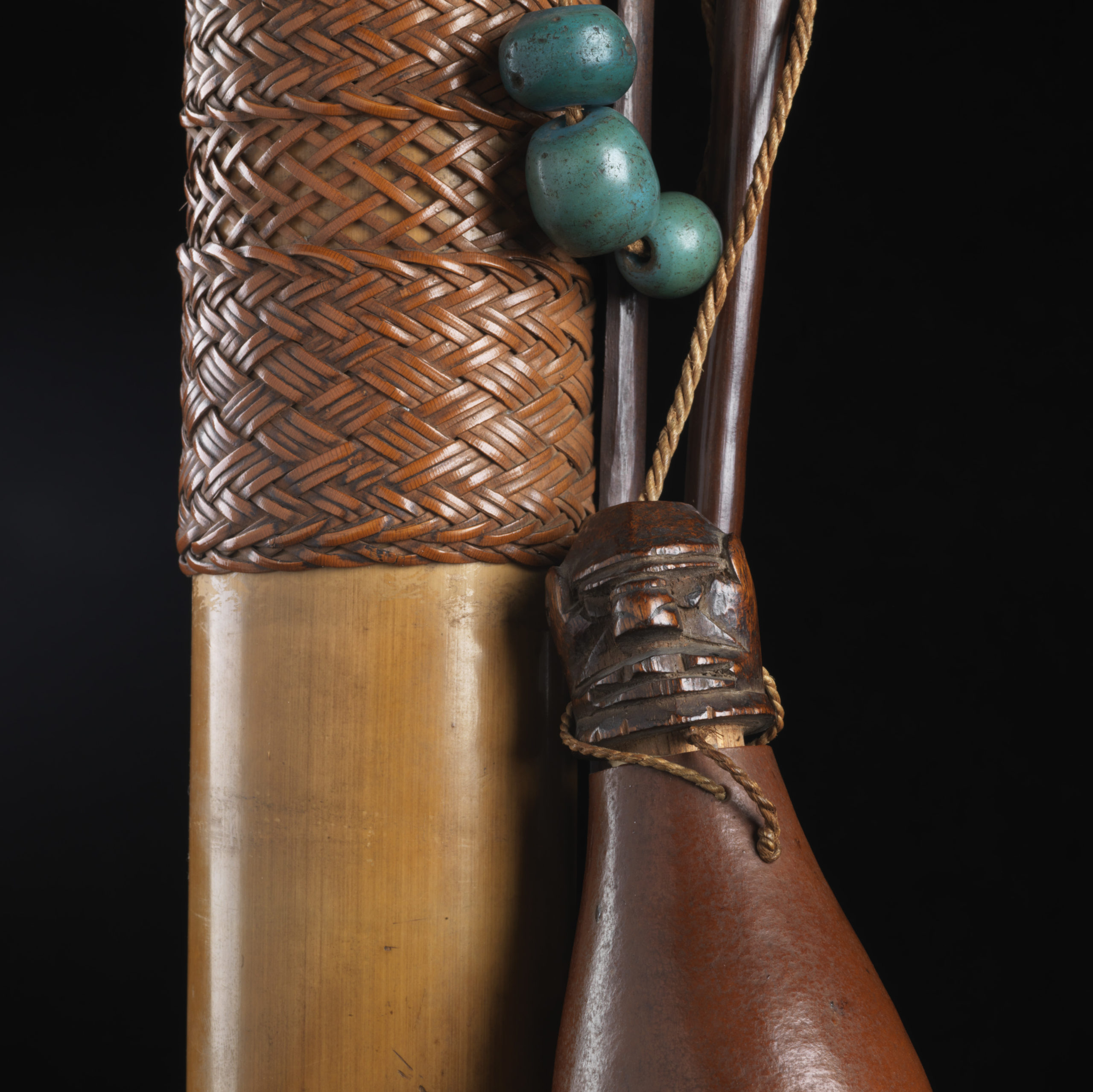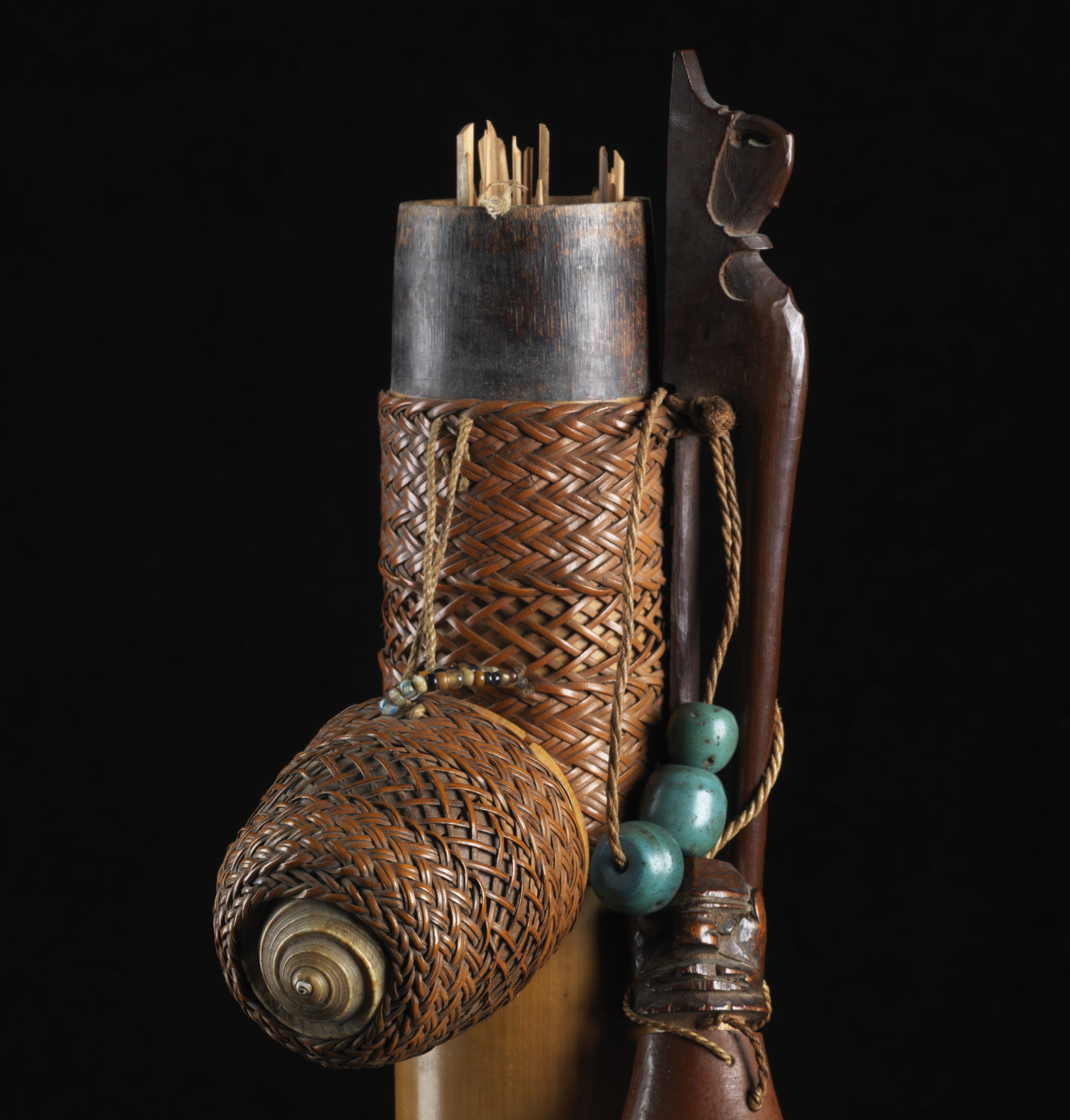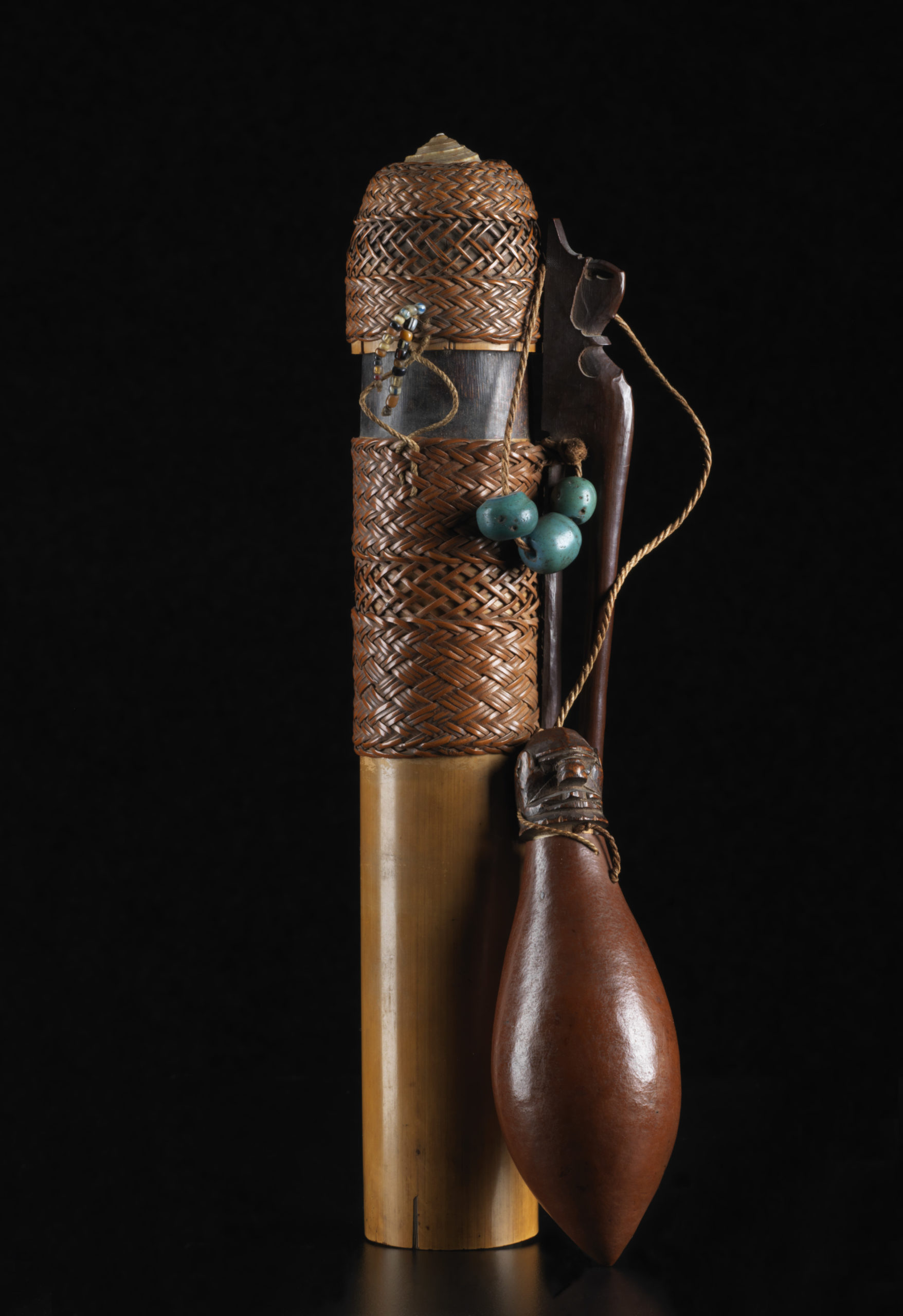Arrow quiver “tolor”
This arrow quiver is very elaborately made. The bamboo body is decorated in the upper third with a beautiful wickerwork. The lid has a bamboo body, which is also bordered with wickerwork and decorated with two strings of beads. A small shell is worked into the top of the lid. To take it along for hunting, a wooden clip is attached to the side, which serves as a suspension on the belt. Furthermore, a small calabash with a wooden lid carved as a face is attached to a string. It contained a supply of “corks”. The arrows for the blowguns were made of palm leaf ribs, which at the end carry a conical “cork” made of very light palm marrow, so that they close the channel tightly and absorb the full force of the air blast.
Three turquoise beads decorate the string additionally.
The poison dart was mostly used to kill smaller animals, for larger animals the spear served as a weapon. An experienced dayaker could use the blowpipe to hit a target deadly at a distance of 60 m. The poison for the arrows was extracted from the Upa tree, which is also called poison tree and belongs to the mulberry family.
| Object | Arrow quiver “tolor” |
| Culture | Borneo, Dayak |
| Time | 20th century |
| Dimensions | Height 33,50 cm, diameter 5 cm |
| Material | Bamboo, wood, rattan, beads, shell, arrows from palm leaf vein, pumpkin |







